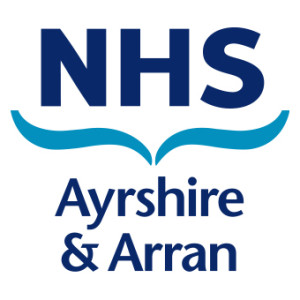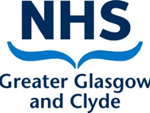UK – Scotland

Crosshouse Hospital
Ayrshire and Arran
Services Offered
Dr Pamela Mackenzie is developing a Renal Supportive Care Programme in Ayrshire and Arran for people with renal disease whose health is deteriorating such that they can benefit from a palliative care approach alongside ongoing treatment of their underlying medical conditions.
Part of this service improvement has involved a project specifically within the Renal High Dependency Ward, to identify patients within the acute renal ward setting who may have supportive/ palliative care needs. All patients admitted to the Renal High Dependency Ward have a Treatment Escalation Plan completed within 24 hours of admission. If a patient is felt to be at risk of deteriorating/ dying, a Renal Supportive Care Trigger Tool is completed which identifies patients who may have unmet palliative care needs, who can be referred to the Renal Supportive Care Programme.
SPICT Uses
The SPICT indicators were used to develop the ‘Trigger Tool’. The Trigger Tool is part of a range of resources developed by Dr Mackenzie with Tracey Dodds and Elaine Street, Renal HDU Supportive Care Link Nurses, to support shared decision making and to develop a person-centred approach to planning supportive/ palliative care within the context of a busy acute clinical area.
The other resources include advance care plan with patient information leaflet, end of life care plan, symptom control and anticipatory prescribing in renal disease and rapid discharge planning.
Forth Valley Royal Hospital
NHS Forth Valley
Services Offered
SPICT is being used in the medical units of Forth Valley Royal Hospital in central Scotland as part of an ongoing project to improve recognition and responses to the ‘deteriorating patient’. Using SPICT encourages a ‘thinking ahead’ approach to care and avoids acute episodes of care being looked at in isolation.
SPICT multidisciplinary working group – Jennifer Wilson (Lung Cancer CNS), Evelyn Paterson & Mairi Armstrong (Palliative Care CNSs), Dr Stan Wright (Respiratory Physician), Elizabeth Ramage (Respiratory Ward Charge Nurse), Olwyn Lamont (Respiratory CNS), Paul Baughan (Lead Cancer GP), Dr Gill Foster (Hospice Associate Specialist)
SPICT Uses
SPICT is being used in the Acute Medical Unit (AMU) and the general medical wards in Forth Valley Royal Hospital (a large district general hospital in central Scotland) as part of an ongoing project to improve recognition and responses to the ‘deteriorating patient’.
Early anticipation, collaborative care planning and decision-making are the primary drivers for this project. In AMU, when a patient is identified as deteriorating on the National Early Warning Score (NEWS) alert system, SPICT is used as part of the assessment process. The goal is to help staff use a structured response to physiological deterioration. The outcome of the assessment might include appropriate anticipatory care planning for people with life limiting conditions where escalation of care may not be appropriate. Using the SPICT helps staff identify unmet palliative/supportive care needs.
In the general medical wards, all admissions will be screened with SPICT. Using SPICT encourages a ‘thinking ahead’ approach to care and avoids acute episodes of care being looked at in isolation. Staff are encouraged to recognise the uncertain but predictable patterns that emerge with advanced long term illnesses and other life limiting conditions and provide appropriate care, based on a changing health picture. This will influence decision making and care in a positive way and present previously missed opportunities to have important discussions that will influence decision making and future care.
SPICT will form part of core documentation for all patients (on the reverse of the NEWS chart). Alongside education on the use of NEWS chart and reliable response stickers, staff also receive education in key aspects of anticipatory care planning (ACP). All ward staff are encouraged to recognise the important role they play in this process and the need to ensure any care planning discussion is documented and communicated to Primary Care Teams at discharge.
SPICT is also being used to promote awareness of electronic Key Information Summaries (KIS). The KIS is an online care plan completed by practice staff in Primary Care that can be viewed during unscheduled/ emergency care episodes. The information provided to GPs on discharge from hospital can about a patient’s anticipatory care plan in the event of further deterioration can then be added to the KIS.
It is hoped that SPICT will link with Scotland-wide initiatives such as; DNACPR (Do not attempt CPR), anticipatory care planning and electronic patient care plans/ records such as KIS to promote high quality, coordinated supportive & palliative care.
Marie Curie
UK
Services Offered
We’re the UK’s leading charity caring for people living with any terminal illness, and their families. We offer expert care through our home nursing and hospice services, as well as information and support for patients, their loved ones and the professionals who care for them.
SPICT Uses
SPICT is used by Marie Curie nurses working in the community.
It also appears on the Palliative Care Knowledge as a link for healthcare professionals
Other information
The Marie Curie Palliative Care Knowledge Zone is an easily accessible, free of charge resource for non specialist healthcare professionals. It provides information regarding caring for people and their families at end of life along with links to partnership organisations.
NHS GGC
NHS Greater Glasgow and Clyde
Services Offered
Palliative care across acute hospital sites. The service is provided by a mixture of generalist and specialist staff
SPICT Uses
Plan to use to trigger ACP conversations
NHS Grampian
North East of Scotland
Services Offered
NHS Grampian is one of the fourteen regional health boards of NHS Scotland. It is responsible for providing health and social care services to the population of over 500,000 people living in Aberdeen City, Aberdeenshire and Moray. NHS Grampian consists of acute services, corporate services and works with the three Integrated Joint Boards in the North-East of Scotland.
SPICT Uses
SPICT is part of our National Early Warning Scoring Chart to empower staff to have conversations with patients and colleagues on person centred care.
Other information
Website: http://www.nhsgrampian.org/nhsgrampian/
Adult in-patient chart: (opens in new window)
NHS Lothian
Edinburgh
Services Offered
In NHS Lothian, SPICT 2017, SPICT-4ALL and the SPICT Guides have been promoted widely in both primary and secondary care as a nationally tool recommended to help health and care staff identify patients for holistic assessment and anticipatory care planning including using the Scottish electronic Key Information Summary (KIS).
A local research study has developed a simple search algorithm (AnticiPal) available across Lothian that GP practices can run as a screening tool in their electronic patient record system to provide a list of patients to be discussed at the practice multi-disciplinary palliative care meetings. This tool is now being developed for use more widely across Scotland and other parts of the UK.
SPICT Uses
In acute hospitals, the SPICT general indicators are being used to help staff in acute admissions units, general medical and surgical wards identify and manage patients admitted with acute clinical problems who also have one or more advanced, progressive conditions or a new life threatening condition or complication.
We know that proactive identification has many benefits for our patients and supports anticipatory care planning in the hospital setting. People are identified for timely ward based care, medications can be reviewed to reduce polypharmacy and plans made for what treatment and care will be of benefit if the person deteriorates on the ward.
A Lothian acute hospitals QI project within the wider Deteriorating Patient programme, is testing leaflets for patients and families about care planning in hospital and communication resources for staff to support sensitive and effective conversations about serious illness, deteriorating health, and dying including CPR discussions. We promote a simple model to structure these conversations with an easy to recall mnemonic: RED-MAP ( Are we R-eady; What do you E-xpect; D-iagnosis and other information; What M-atters now; A-ctions that can help and what will not work; an invitation to P-lan ahead together.)
Many palliative care education programmes in Lothian (and other parts of Scotland) use SPICT in teaching health and social care professionals about identifying people who might benefit from the holistic assessment and care that are central to an integrated palliative care approach that accompanies optimal management of the underlying patient’s illnesses.
Other information
Copies of SPICT are downloaded from the SPICT website and laminated for ward areas; we also provide small prompt cards for ward staff. These are available to others on request along with our communication prompt cards called ACP-Talk.
Scottish Government
Scotland
Services Offered
The Scottish Government is the devolved Government for Scotland and has a range of responsibilities that include health and social care. There are Scottish policies on palliative and end-of-life care, cardiopulmonary resuscitation and financial benefits covering health and disability.
SPICT Uses
The SPICT tool is included in Scotland's 'Strategic Framework for Action in Palliative and End of Life Care' and the Health Improvement Scotland 'Palliative Care Identification Tools Comparator'.
New legislation is changing assessment of eligibility for health benefits in Scotland such that: an individual is to be regarded as having a terminal illness for the purpose of determining entitlement to disability assistance if it is the clinical judgement of a registered medical practitioner that the individual has a progressive disease that can reasonably be expected to cause the individual’s death. SPICT is referenced as one of the recommended tools in the Chief Medical Officer’s (CMO) guidance for doctors completing benefits assessments for these people.







